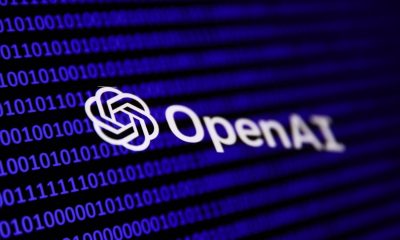Technology
AI chatbots are ‘juicing engagement’ instead of being useful, Instagram co-founder warns

Instagram co-founder Kevin Systrom says AI companies are trying too hard to “juice engagement” by pestering their users with follow-up questions, instead of providing actually useful insights.
Systrom said the tactics represent “a force that’s hurting us,” comparing them to those used by social media companies to expand aggressively.
“You can see some of these companies going down the rabbit hole that all the consumer companies have gone down in trying to juice engagement,” he said at StartupGrind this week. “Every time I ask a question, at the end it asks another little question to see if it can get yet another question out of me.”
The comments come amid criticism of ChatGPT for being too nice to users instead of directly answering their questions. OpenAI has apologized for the problem and blamed “short-term feedback” from users for it.
Systrom suggested that chatbots being overly engaging is not a bug, but an intentional feature designed for AI companies to show off metrics like time spent and daily active users. AI companies should be “laser-focused” on providing high-quality answers rather than moving metrics in the easiest way possible, he said.
Systrom didn’t name any specific AI companies in his remarks. He didn’t immediately respond to a request for comment.
In response, OpenAI pointed TechCrunch to its user specs, which state that its AI model “often does not have all of the information” to provide a good answer and may ask for “clarification or more details.”
Techcrunch event
Berkeley, CA
|
June 5
But unless questions are too vague or difficult to answer, the AI should “take a stab at fulfilling the request and tell the user that it could be more helpful with certain information,” the specs read.

A blog which focuses on business, Networth, Technology, Entrepreneurship, Self Improvement, Celebrities, Top Lists, Travelling, Health, and lifestyle. A source that provides you with each and every top piece of information about the world. We cover various different topics.
Technology
US Senate removes controversial ‘AI moratorium’ from budget bill

U.S. senators voted overwhelmingly on Tuesday to remove a controversial 10-year ban on states’ abilities to regulate AI from the Trump administration’s “Big Beautiful Bill,” reports Axios.
The provision to the reconciliation bill was introduced by Sen. Ted Cruz (R-TX). Many prominent Silicon Valley executives — including OpenAI’s Sam Altman, Anduril’s Palmer Luckey, and a16z’s Marc Andreessen — were in favor of the so-called “AI moratorium,” which they said would prevent states from forming an unworkable patchwork of regulation that could stifle AI innovation.
Opposition to the provision became a bipartisan issue, as most Democrats and many Republicans warned that the ban on state regulation would harm consumers, and let powerful AI companies operate with little oversight. Critics also objected to Cruz’s plan to tie compliance with federal broadband funding.
After going back and forth over the provision, Sen. Marsha Blackburn (R-TN) on Monday offered an amendment to strip the provision alongside Sen. Maria Cantwell (D-WA).
Blackburn originally opposed the provision, but came to an agreement with Cruz over the weekend that shortened the proposed ban from ten years to five. Blackburn then pulled her support for the provision entirely on Monday.
The Senate voted 99-1 to strip the AI moratorium.

A blog which focuses on business, Networth, Technology, Entrepreneurship, Self Improvement, Celebrities, Top Lists, Travelling, Health, and lifestyle. A source that provides you with each and every top piece of information about the world. We cover various different topics.
Technology
Next-gen procurement platform Levelpath nabs $55M

Levelpath, a procurement software startup founded by the duo behind Scout RFP, has raised $55 million in Series B funding led by Battery Ventures as the company looks to quadruple its revenue this year.
The funding round also saw participation from existing investors, including Benchmark, which led Levelpath’s $14.5 million seed round, and Redpoint, the lead investor in the $30 million Series A round announced in 2023.
The startup was founded by Stan Garber and Alex Yakubovich (pictured right), whose previous startup, Scout RFP, was acquired by Workday for $540 million in 2019. During the three years Yakubovich and Garber spent working at Workday, the two identified persistent procurement challenges that motivated them to build a mobile-first, user-friendly platform.
Levelpath’s timing proved fortuitous; launching right as ChatGPT debuted has enabled the startup to integrate AI capabilities from its inception. This includes reviewing unstructured data in contracts and recommending less expensive, similar products and services. The company now counts Ace Hardware, Amgen, Coupang, and SiriusXM as customers.
The investment signals confidence in Levelpath’s fast growth and its potential to disrupt a market dominated by legacy players. Procurement software has long been controlled by outdated vendors like Coupa and Ariba, whose clunky systems often drive employees to bypass official processes. This “rogue” spending using corporate credit cards frequently results in overspending and missed opportunities for bulk discounts, according to Battery Ventures general partner Neeraj Agrawal.
In fact, procurement represents companies’ second-largest expenditure after payroll, making software improvements particularly valuable. The procurement software market was valued at $7.3 billion annually in 2023, according to Fortune Business Insights.
Although Levelpath is a newer and likely smaller player compared to its main competitors — including Zip, valued at $2.2 billion last fall, and Oro Labs, backed by Felicis — the company seems to have all the right ingredients, including Agrawal, who led Battery’s Series B investment into Coupa and has joined Levelpath’s board.
Coupa, of course, grew into one of the most successful procurement companies of its era. It had a successful IPO in 2016 and several years later was taken private by PE firm Thoma Bravo for $8 billion.
Agrawal, who likely understands what it takes to build a big business in this category, is equally impressed by Levelpath’s technology and its founders. “They have such a strong reputation for delivering product, being good people to work with, and doing what they say they’re going to do,” Agrawal told TechCrunch. “Customers want to work with them and help them build this next-generation product.”
Yakubovich and Garber have been friends since attending high school in Ohio. They bonded over their shared heritage as immigrants from the former Soviet Union and a mutual interest in entrepreneurship. The pair have been working together for over 20 years, and their stated goal is to help customers enjoy, rather than avoid, using procurement software.
While procurement might seem like a mundane business function, it offers a direct and significant return on investment by helping companies save money.
“It makes the cash register ring because of these savings,” Agrawal said.

A blog which focuses on business, Networth, Technology, Entrepreneurship, Self Improvement, Celebrities, Top Lists, Travelling, Health, and lifestyle. A source that provides you with each and every top piece of information about the world. We cover various different topics.
Technology
With ‘F1’, Apple finally has a theatrical hit

Looks like Apple has its first bona fide box office hit.
The company has already produced critically-acclaimed and award-winning films for Apple TV+. In fact, while Netflix has reportedly spent millions on its Oscar campaigns, Apple’s “Coda” remains the only movie produced by a streaming service to win the Academy Award for Best Picture.
It has, however, been a different story at the box office — at best, returns have fallen short of ambitious budgets, and with “Argylle,” the company had a spectacular flop. Last year, Apple reportedly decided to scale back on both budgets and theatrical releases, leading to canceled projects and criticism from directors.
Things have finally turned around with “F1” — currently the number one movie in theaters, on-track to earn $55.6 million this weekend at the domestic box office. With $144 million in global ticket sales, “F1” will soon surpass “Napoleon” ($228 million) as Apple’s highest-grossing film.
“F1”’s director, Joseph Kosinski, previously helmed “Top Gun: Maverick,” and in many ways, the new movie sounds like a loose copy of the “Maverick” formula, combining realistic, you-are-there cinematography (Brad Pitt is really driving those cars!) with a familiar narrative about an older veteran forced to work with a young upstart who needs to learn a thing or two about old-fashioned, analog grit.
“F1” (which is being distributed in the U.S. by Warner Bros.) likely benefited from the surging U.S. popularity of Formula One racing, fueled in part by Netflix’s docuseries “Drive to Survive.” Much of it was filmed at actual Formula One races, and driver Lewis Hamilton also signed on as a producer.
Apple CEO Tim Cook even joined Hamilton for a Variety cover story in which Cook said the company was able to “bring some things that were uniquely Apple to the movie, like our camera technology.” The plan, he added, was “to have the whole of the company support it as well — our retail operation and everything.” (Not all customers have been pleased with the cross-promotion.)
While Apple’s bet seems to be paying off, it’s still not clear whether “F1” — with a reported budget of more than $200 million — will actually make a profit in theaters. Before its release, one box office analyst told Vulture that even in success, the movie “may end up being a very expensive commercial for original content on Apple TV.”

A blog which focuses on business, Networth, Technology, Entrepreneurship, Self Improvement, Celebrities, Top Lists, Travelling, Health, and lifestyle. A source that provides you with each and every top piece of information about the world. We cover various different topics.
-

 Life Style2 weeks ago
Life Style2 weeks ago6 Summer Tips for Unwinding, Recharging and Taking Care of Yourself
-

 Life Style3 weeks ago
Life Style3 weeks agoThe Top 10 Ways to Be Kind to Yourself Starting Today
-
News2 weeks ago
A Timeline of the Minnesota Shooting
-

 Technology3 weeks ago
Technology3 weeks agoThe Meta AI app is a privacy disaster
-

 Travel3 weeks ago
Travel3 weeks ago9 Funny New York Town Names That’ll Make You Do a Double Take
-

 Entertainment2 weeks ago
Entertainment2 weeks agoJesy Nelson Brings Her Twin Babies Home After 3 Months in Hospital
-

 Technology2 weeks ago
Technology2 weeks agoThe investor experience at TechCrunch All Stage: One floor, infinite deal flow
-

 Technology2 weeks ago
Technology2 weeks agoOpenAI found features in AI models that correspond to different ‘personas’







































































































































